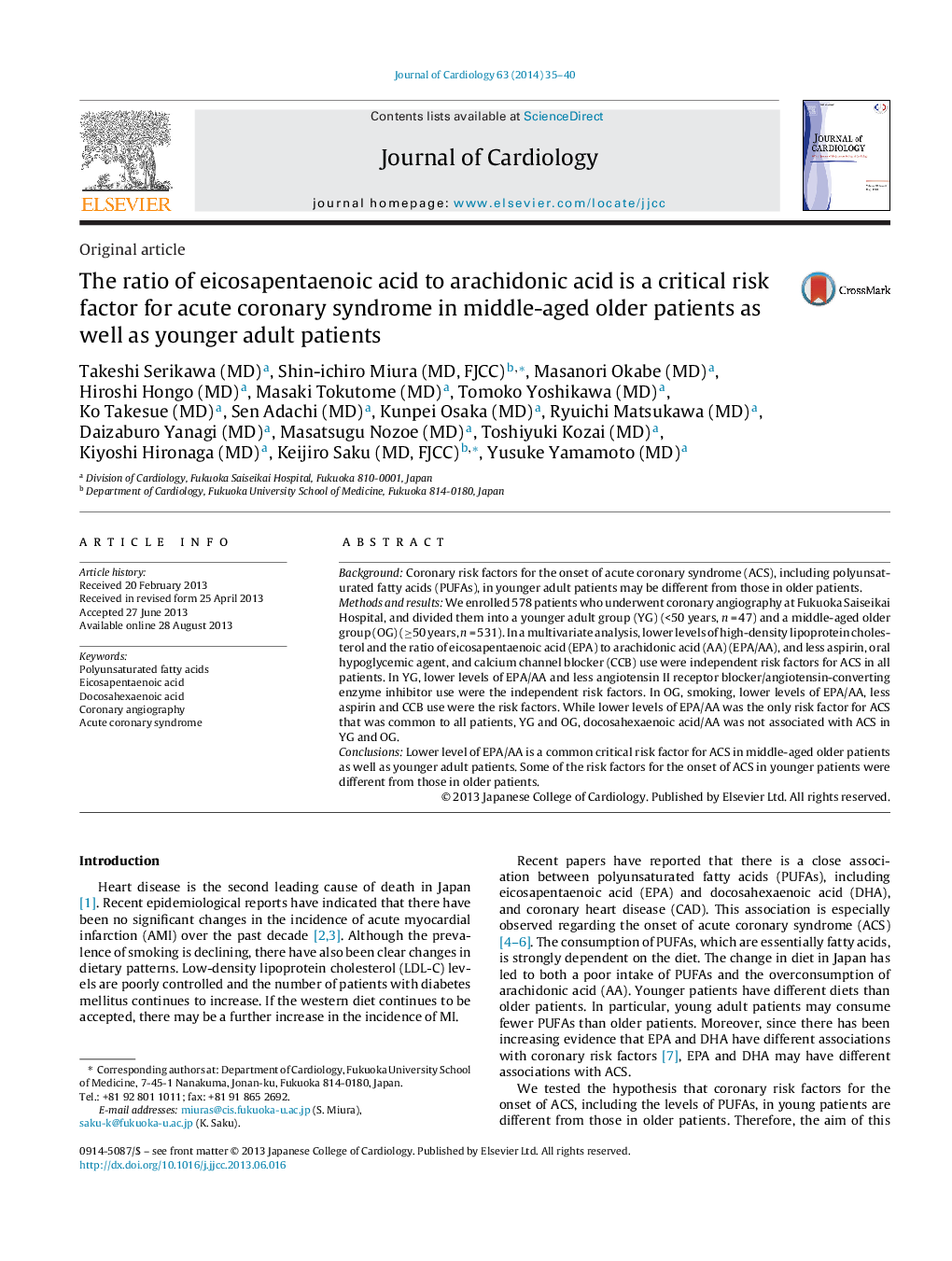| Article ID | Journal | Published Year | Pages | File Type |
|---|---|---|---|---|
| 5984292 | Journal of Cardiology | 2014 | 6 Pages |
BackgroundCoronary risk factors for the onset of acute coronary syndrome (ACS), including polyunsaturated fatty acids (PUFAs), in younger adult patients may be different from those in older patients.Methods and resultsWe enrolled 578 patients who underwent coronary angiography at Fukuoka Saiseikai Hospital, and divided them into a younger adult group (YG) (<50 years, n = 47) and a middle-aged older group (OG) (â¥50 years, n = 531). In a multivariate analysis, lower levels of high-density lipoprotein cholesterol and the ratio of eicosapentaenoic acid (EPA) to arachidonic acid (AA) (EPA/AA), and less aspirin, oral hypoglycemic agent, and calcium channel blocker (CCB) use were independent risk factors for ACS in all patients. In YG, lower levels of EPA/AA and less angiotensin II receptor blocker/angiotensin-converting enzyme inhibitor use were the independent risk factors. In OG, smoking, lower levels of EPA/AA, less aspirin and CCB use were the risk factors. While lower levels of EPA/AA was the only risk factor for ACS that was common to all patients, YG and OG, docosahexaenoic acid/AA was not associated with ACS in YG and OG.ConclusionsLower level of EPA/AA is a common critical risk factor for ACS in middle-aged older patients as well as younger adult patients. Some of the risk factors for the onset of ACS in younger patients were different from those in older patients.
